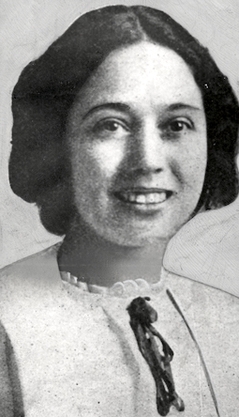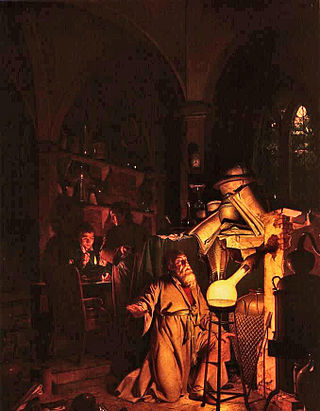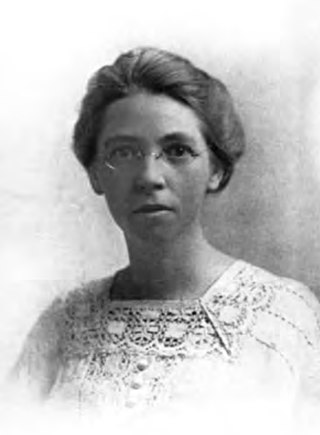
John Griffith Chaney, better known as Jack London, was an American novelist, journalist and activist. A pioneer of commercial fiction and American magazines, he was one of the first American authors to become an international celebrity and earn a large fortune from writing. He was also an innovator in the genre that would later become known as science fiction.

Ernest Thompson Seton was an English-born Canadian-American author, wildlife artist, founder of the Woodcraft Indians in 1902, and one of the founding pioneers of the Boy Scouts of America (BSA) in 1910.
The Linnean Society of London is a learned society dedicated to the study and dissemination of information concerning natural history, evolution, and taxonomy. It possesses several important biological specimen, manuscript and literature collections, and publishes academic journals and books on plant and animal biology. The society also awards a number of prestigious medals and prizes.

Just So Stories for Little Children is a 1902 collection of origin stories by the British author Rudyard Kipling. Considered a classic of children's literature, the book is among Kipling's best known works.

Edward Sylvester Morse was an American zoologist, archaeologist, and orientalist. He is considered the "Father of Japanese archaeology."

Richard Lydekker was an English naturalist, geologist and writer of numerous books on natural history.

John Burroughs was an American naturalist and nature essayist, active in the conservation movement in the United States. The first of his essay collections was Wake-Robin in 1871.
Grove Press is an American publishing imprint that was founded in 1947. Imprints include: Black Cat, Evergreen, Venus Library, and Zebra. Barney Rosset purchased the company in 1951 and turned it into an alternative book press in the United States. He partnered with Richard Seaver to bring French literature to the United States. The Atlantic Monthly Press, under the aegis of its publisher, Morgan Entrekin, merged with Grove Press in 1991. Grove later became an imprint of the publisher Grove/Atlantic, Inc.

Sir Charles George Douglas Roberts was a Canadian poet and prose writer. He was one of the first Canadian authors to be internationally known. He published various works on Canadian exploration and natural history, verse, travel books, and fiction." He continued to be a well-known "man of letters" until his death.

Nature writing is nonfiction or fiction prose or poetry about the natural environment. Nature writing encompasses a wide variety of works, ranging from those that place primary emphasis on natural history facts to those in which philosophical interpretation predominate. It includes natural history essays, poetry, essays of solitude or escape, as well as travel and adventure writing.

Opal Irene Whiteley was an American nature writer and diarist whose childhood journal was first published in 1920 as The Story of Opal in serialized form in the Atlantic Monthly, then later that same year as a book with the title The Story of Opal: The Journal of an Understanding Heart. It gave Whiteley celebrity status in her home state of Oregon, where she toured giving lectures on nature and the environment.

William Joseph Long was an American writer, naturalist and minister. He lived and worked in Stamford, Connecticut as a minister of the First Congregationalist Church.
The John Burroughs Medal, named for nature writer John Burroughs (1837–1921), is awarded each year in April by the John Burroughs Association to the author of a book that the association has judged to be distinguished in the field of natural history. Only twice has the award been given to a work of fiction.

Elements of the supernatural and the fantastic were an element of literature from its beginning, though the idea of a distinct genre, in the modern sense, is less than two centuries old.

The Legend of Lobo is a 1962 American animal-adventure film that follows the life and adventures of Lobo, a wolf born and raised in southwestern North America. Based upon "Lobo the King of Currumpaw" by Ernest Thompson Seton from the author's 1898 book titled Wild Animals I Have Known, neither the time period nor the precise location are specified in the film; in part because the story is told as much from a wolf's point of view as from a human's. There is no dialogue in the film, with the only interpretation presented through the use of story-song composed and sung by the Sons of the Pioneers and the Sherman Brothers, and narration by Rex Allen. Based on the non-fiction account by Seton, Lobo is an 1890s wolf from an account by Seton who was a naturalist, and was a bounty hunter in the real-life story. Filming took place in Sedona, Arizona.

"Lobo, the King of Currumpaw" is the first story of author Ernest Thompson Seton's 1898 book Wild Animals I Have Known. Seton based the book on his experience hunting wolves in the Southwestern United States.

The nature fakers controversy was an early 20th-century American literary debate highlighting the conflict between science and sentiment in popular nature writing. The debate involved important American literary, environmental and political figures. Dubbed the "War of the Naturalists" by The New York Times, it revealed seemingly irreconcilable contemporary views of the natural world: while some nature writers of the day argued as to the veracity of their examples of anthropomorphic wild animals, others questioned an animal's ability to adapt, learn, teach, and reason.

Nathaniel Colgan was a self-taught Irish naturalist primarily known for his botanical work.

Edith Marion Patch was an American entomologist and writer. Born in Worcester, Massachusetts, she received a degree from the University of Minnesota in 1901 and originally embarked on a career as an English teacher before receiving the opportunity to organize the entomology department at the University of Maine. She became the head of the entomology department in 1904, and, despite misgivings from several male colleagues about having a female department head, she remained in this post until her retirement in 1937. Edith Patch is recognized as the first truly successful professional woman entomologist in the United States.
Farida Anna Wiley (1889-1986) was an American naturalist, ornithologist and educator who worked with the American Museum of Natural History in New York City. Wiley was known for her 7 am walking tours and natural science field trips of Central Park and Greater New York, and was an author, illustrator, teacher and historian.

















